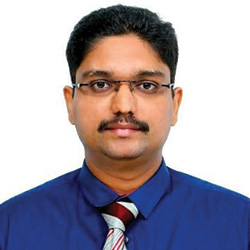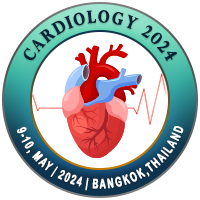
Praveen M
Anaesthesia at Army Hospital Research and Referral, IndiaTitle: Management of bronchomalacia in infants post cardiac surgery using synchronised duopap: a case series
Abstract
Tracheo-bronchomalacia is the weakness in the structural integrity of the cartilaginous ring. About 13.7% of trachea-bronchomalacia is associated with congenital heart disease. Conventionally the tracheo-bronchomalacia is treated with NIV (non invasive ventilation) or tracheostomy and allowing the child to grow naturally. But these conventional treatment modalities have their own set of complications such as prolonged hospital stay, high failure rates and secondary infections. Noninvasive ventilation is an alternate treatment option to overcome such complications. It prevents airway collapse and keeps airway patent. Here we present a case series in which 7 infants with tracheobronchomalacia post cardiac surgery were successfully managed by synchronised DuoPAP, a non-invasive mode of ventilation by Fabian Therapy Evolution Ventilator; Acutronic, Switzerland. “Synchronisation” of nasal DuoPAP is a first in ventilation introduced by Acutronic. Total 7 infants with a mean age of 4 months were managed with synchronized DuoPAP as a treatment to tracheo-bronchomalacia. All infants were operated for the respective congenital heart disease and managed with mechanical ventilation in the post-op period followed by HFNC(AIRVO2) post-extubation. All infants manifesting with airway collapse post extubation requiring multiple reintubations were then managed with synchronized DuoPAP. Diagnosis was confirmed on CT scan. All infants showed significant improvement with the DuoPAP both clinically as well as radiologically. The mean mechanical ventilation time was 11 days and DuoPAP time was 19 days. None of the infants required tracheostomy and were discharged to home successfully. The “synchronized” DuoPAP is highly effective and low risk treatment option for infants and children with respiratory distress due to bronchomalacia, offering an additional advantage of tolerance and better patient management in paediatric age group.
Biography
Praveen M has completed his MBBS in 2014 from Government Kilpauk Medical College, India. He
served in Indian army as a medical officer for 5yrs and took release in 2019. He is now pursuing his post-graduation in Anaesthesia and critical care from Army Hospital Research and Referral, New Delhi, India.

